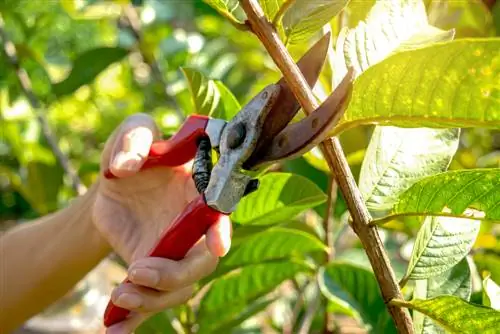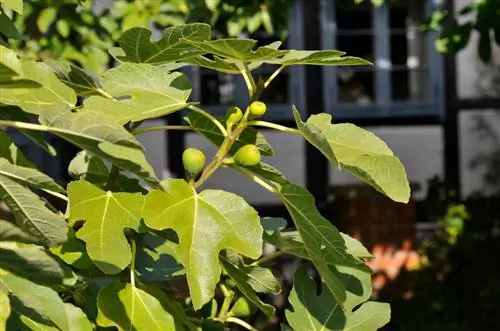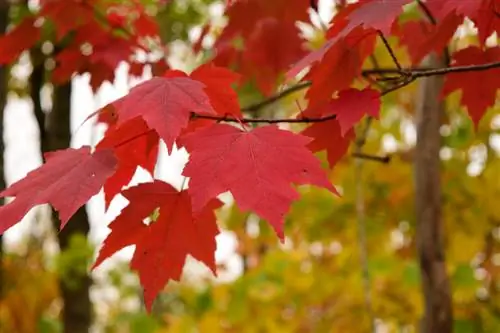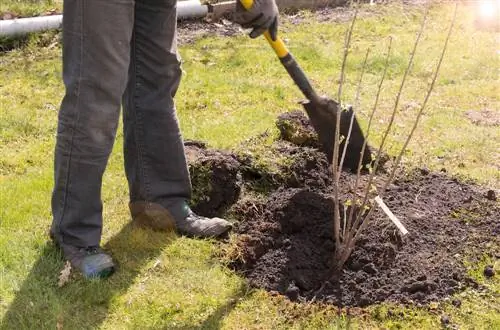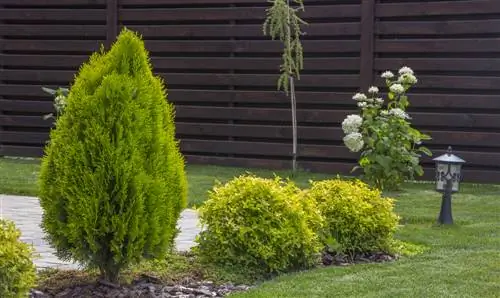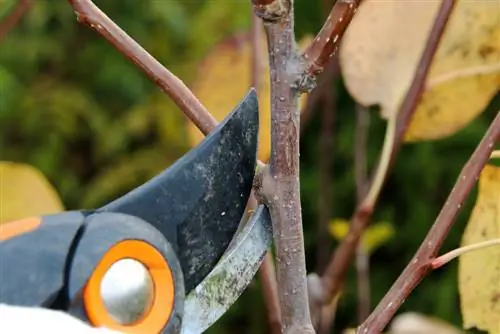- Author admin [email protected].
- Public 2023-12-16 16:46.
- Last modified 2025-01-23 11:21.
How exactly and when a deciduous tree is cut back varies greatly and depends on the specific species and variety. What you should definitely not do, however, is plant a tree that is growing large in a location that is too small and then hinder its development by cutting heavily.
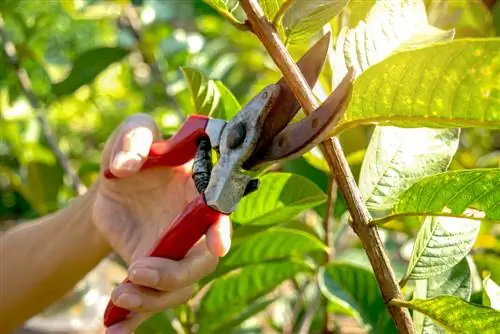
When and how should you prune deciduous trees?
Deciduous trees should ideally be pruned during dormancy, with some species pruning in late summer to minimize bleeding losses. The aim of pruning is to promote natural growth, preserve the tree structure and thin out dead wood or diseased wood.
Why do you actually have to cut?
Pruning primarily serves to promote the natural structure of a tree and to preserve or restore it later - for example, by rejuvenating an old, bare tree through targeted pruning. Pruning measures are also necessary to shape hedges and topiary trees (e.g. sculptures made of box or hornbeam), but not to limit the height of bushes and trees that have grown thicker than expected. Not every deciduous tree needs to be cut; for many, using scissors often causes great damage. However, refined trees such as many fruit and ornamental fruit trees require regular pruning so that they fruit evenly.
The different forms of pruning
Pruning of deciduous trees should, if possible, be carried out during the period when the vegetation is dormant. However, because quite a few tree species lose significant amounts of bleeding sap after pruning at the end of winter, they are better cut in late summer. This is useful for species such as maple (Acer), gleditsia triacanthos, walnut (Juglans), tulip tree (Liriodendron tulipifera), magnolia (Magnolia), cord trees (Sophora) and summer linden tree (Tilia platyphyllos).
Plant cutting
Deciduous trees are often transplanted with bare roots. They lose some of their roots when clearing, so a balance must be created between the remaining roots and above-ground parts of the plant before planting. To do this, remove weak and damaged branches and shorten the remaining ones by about a third. On the other hand, trees that naturally grow with a few, thick branches do not require any pruning. This also applies to evergreen deciduous trees.
Conservation cut
Most summer and winter green deciduous trees basically do not need maintenance pruning, unless they are fruiting fruit trees. However, you can thin out the trees or remove dead or diseased wood.
Tip
Many small trees such as fruit and ornamental fruit trees and shrubs are propagated in the nursery through grafting. It is not uncommon for more or less “wild” shoots to emerge from the rootstock, which you must carefully remove directly at their point of origin. Otherwise they could overgrow the noble variety or at least inhibit its development.

